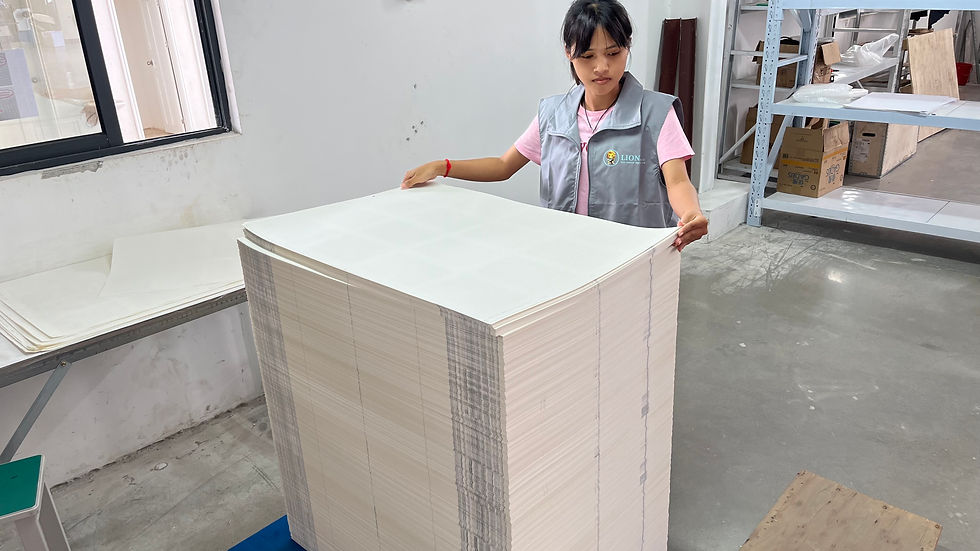What Do We Know About the Latest US-China Trade Deal?
- Leo Xia

- Jun 12
- 3 min read
Quick Content Reach:
If you buy notebooks, planners, or packaging in bulk, the latest US-China trade deal just rewrote your cost sheet overnight. After two days of London talks on June 10–11, 2025, Washington confirmed a framework that locks cumulative U.S. tariffs on Chinese goods at 55 %, while China lowers its duties to 10 %.reuters.com

Why This Deal Matters to Stationery Buyers
High U.S. tariffs used to be a moving target; now they are a fixed line in your budget. For writing-paper product managers, a predictable 55 % rate enables cleaner landed-cost calculations, clearer retail pricing, and more accurate margin planning.
Key Terms of the 2025 London Framework Agreement
1. 55 % Tariff Cap — No Further Escalation, But No Rollback Yet
ENThe White House merges all prior Section 301 and pandemic-era duties into a single ceiling of 55 %. Analysts read this as a political compromise: visibility without a tariff “cold turkey.”aljazeera.com
2. Rare-Earth Concession
In exchange, China resumes six-month rare-earth exports vital for EV motors and tech devices, easing supply pressure on U.S. manufacturers.theguardian.com
3. August 10 Deadline
Both sides must convert the framework into a legally binding text by August 10, 2025. Until then, the 55 % rate stands, subject to congressional review.
The Cost Equation—Dual-Base Strategy in Action
China Base: Scale Efficiency vs. 55 % Duty
Our Jiaxing plant leverages mature upstream suppliers, driving per-unit production cost down by 18 % in 2024. Even after a 55 % tariff, mass-market SKUs can remain price-competitive due to scale savings.
Cambodia Base: Tariff Arbitrage & Flexible Batches
Cambodia still faces a suspended 49 % “Liberation Day Tariff”—postponed until July 9, 2025—plus the 10 % U.S. base tariff.khmertimeskh.comWhile negotiations continue, our Phnom Penh lines focus on short-run customized orders where tariff savings outweigh smaller-batch costs.
Promise to Clients—Price Fluctuation ≤ 15 %
By hedging China’s scale against Cambodia’s tariff window, we try to keeping core-product pricing swings within ±15 % quarter-over-quarter.
Agility Stress Test—Turning the 90-Day Window Into Muscle Memory
We treat the 90-day observation period not as anxiety fuel but as a live drill:
48 h line-switch between China ↔ Cambodia
+20 % mirrored inventory stored in both hubs
Timely tariff–cost dashboard shared with clients.
Globalisation Reframed—Cambodia as a Springboard, Not an Escape
Our ASEAN base is a “safety option,” not a China exit:
Tap RCEP rules to open new Southeast-Asian retail channels
Pilot “China R&D + ASEAN manufacturing” for duty diversification
What the Latest US-China Trade Deal Means for Your Notebook Sourcing
Budget Clarity – Bake a 55 % duty into 2025–26 contracts; build margin cushions now.
Supplier Vetting – Favor dual-base factories that can pivot quickly.
Timeline Discipline – Confirm lead-times before the August 10 milestone to avoid rush surcharges.
How Lion Paper Turns Uncertainty Into Your Competitive Certainty
Transparent QC – 10+ inspectors wear body-cams; clients can check.
20+ Smart Machines – Heidelberg presses to auto-spiral binding cut defect rates by 27 %.
5–7 day sampling – R&D lab delivers press-ready prototypes in under a week.
China + Cambodia + Korea – three-node network that lets you reroute without re-qualification.

Conclusion & CTA to Latest US-China Trade Deal
Tariffs ebb and flow, but partnerships built on transparency and dual-base resilience endure. Ready to see how our “China × Cambodia” model can lock your costs and secure your Q4 shelves? Contact Lion Paper for your customized solutions!
—Leo Xia, CEO, Lion Paper Products







Comments